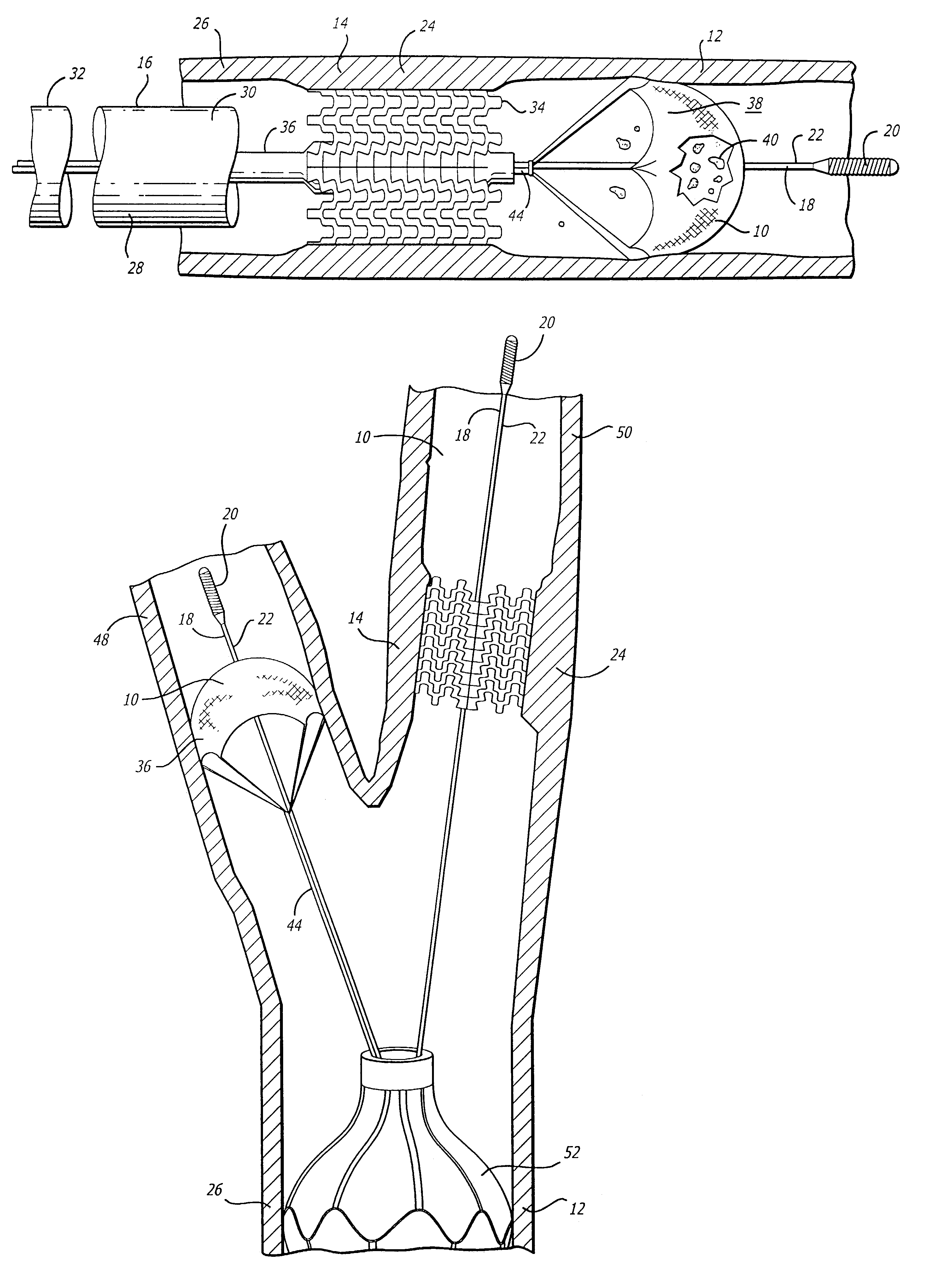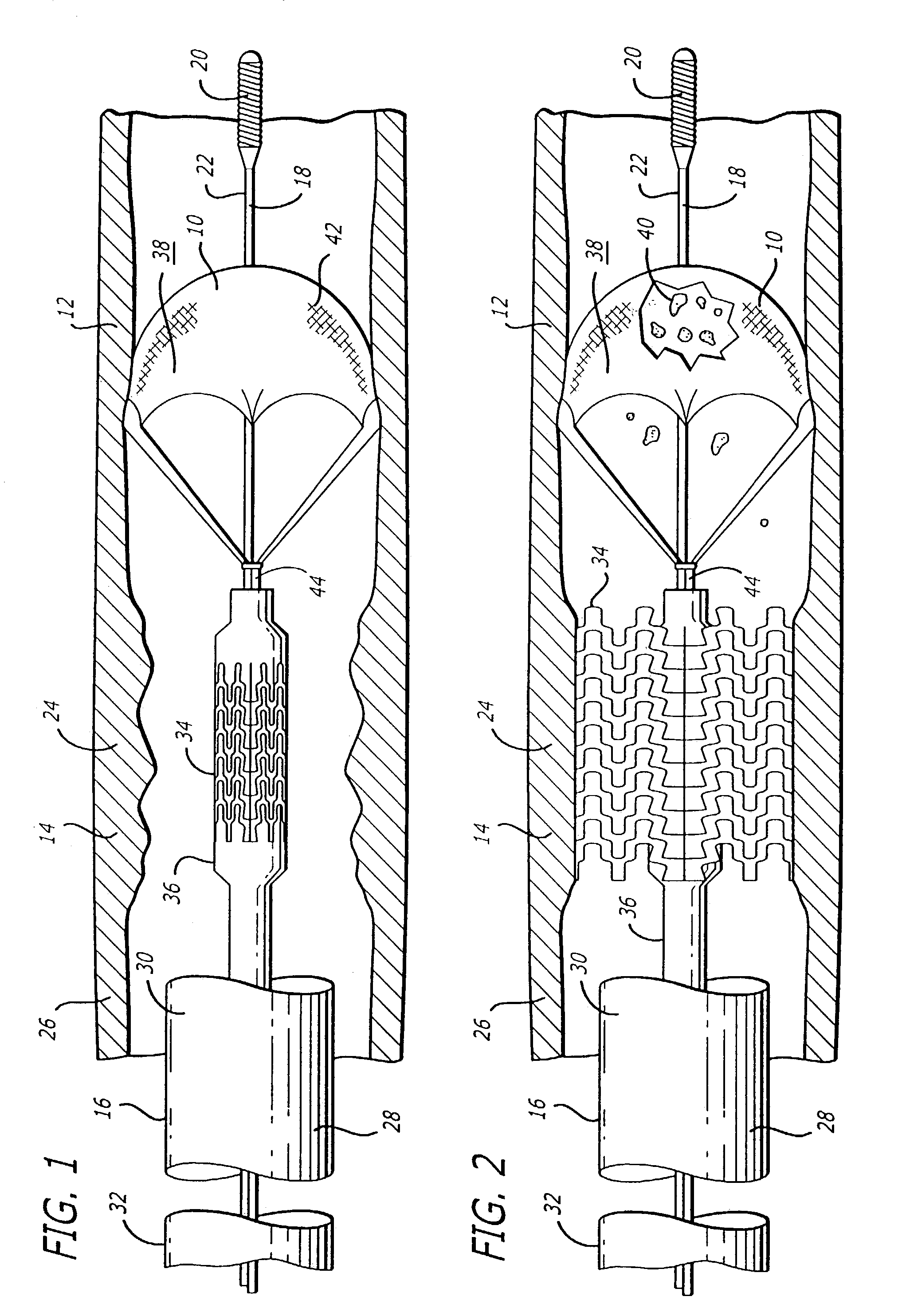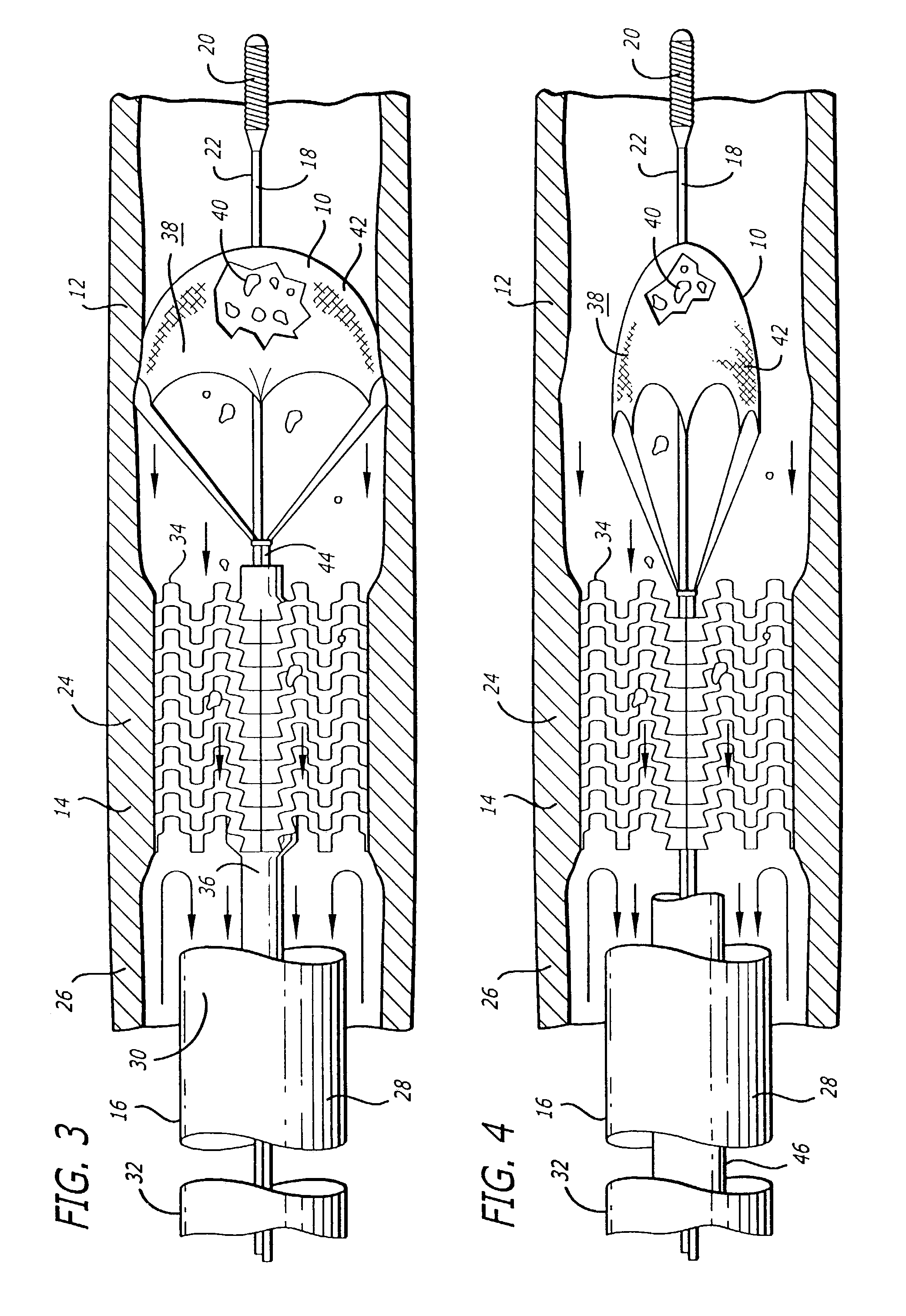Vessel occlusion device for embolic protection system
a technology of embolic protection and valve occlusion, which is applied in the field of valve occlusion device for embolic protection system, can solve the problems of significant health problems of patients, particles that are not always fully vaporized and may enter the bloodstream, and the release of emboli into the circulatory system can be extremely dangerous for patients, so as to achieve a higher degree of confiden
- Summary
- Abstract
- Description
- Claims
- Application Information
AI Technical Summary
Benefits of technology
Problems solved by technology
Method used
Image
Examples
Embodiment Construction
[0024]One aspect of the invention is an improved system and method for efficiently and effectively enabling a therapeutic procedure to be performed in a blood vessel at an interventional procedure site (e.g., stenosis site due to plaque), adapted to occlude the blood vessel at a location relative to the interventional procedure site, to prevent the flow of blood past the occlusion, and to enable the capture of embolic material which may be released into the blood vessel during the interventional procedure, and to enable recovery of the captured emboli. The embodiments of the improved system and method are illustrated and described herein by way of example only and not by way of limitation. While the present invention is described in detail as applied to the carotid arteries of the patient, those skilled in the art will appreciate that it can also be used in other body lumens as well, such as the coronary arteries, renal arteries, saphenous veins and other peripheral arteries. Additi...
PUM
 Login to View More
Login to View More Abstract
Description
Claims
Application Information
 Login to View More
Login to View More - R&D
- Intellectual Property
- Life Sciences
- Materials
- Tech Scout
- Unparalleled Data Quality
- Higher Quality Content
- 60% Fewer Hallucinations
Browse by: Latest US Patents, China's latest patents, Technical Efficacy Thesaurus, Application Domain, Technology Topic, Popular Technical Reports.
© 2025 PatSnap. All rights reserved.Legal|Privacy policy|Modern Slavery Act Transparency Statement|Sitemap|About US| Contact US: help@patsnap.com



